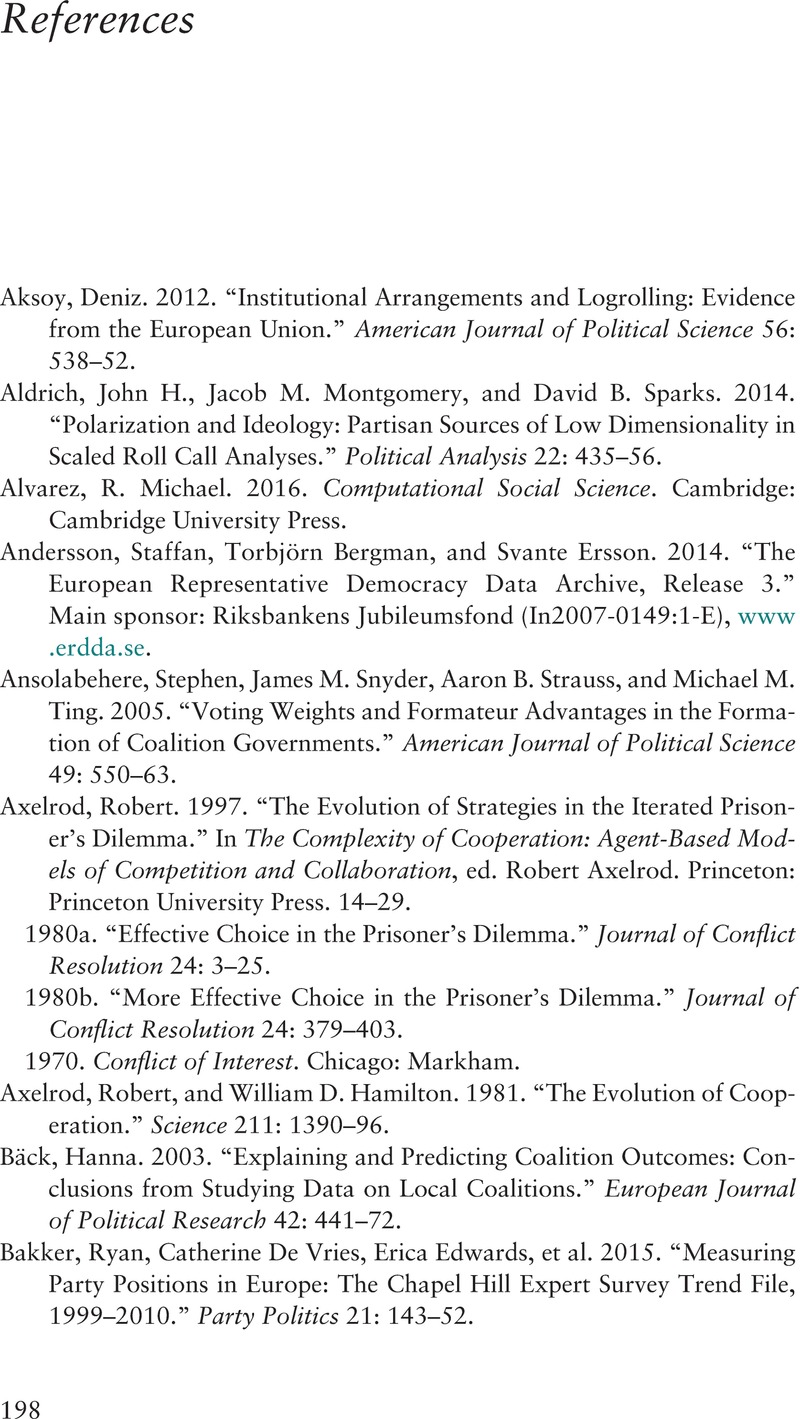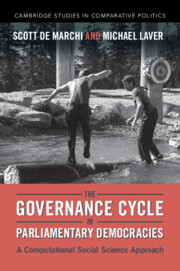Book contents
- The Governance Cycle in Parliamentary Democracies
- Cambridge Studies in Comparative Politics
- The Governance Cycle in Parliamentary Democracies
- Copyright page
- Contents
- Figures
- Tables
- Acknowledgments
- Introduction
- 1 Governance, Complexity, Computation, and Rationality
- 2 The Governance Cycle
- 3 An Agent-Based Model of Government Formation and Survival
- 4 Artificial Intelligence and Government Formation
- 5 Analyzing Models of Government Formation and Survival
- 6 Empirical Analyses of Government Formation and Stability
- 7 Conclusions and Aspirations
- Book part
- References
- Index
- Cambridge Studies in Comparative Politics
- References
References
Published online by Cambridge University Press: 02 February 2023
- The Governance Cycle in Parliamentary Democracies
- Cambridge Studies in Comparative Politics
- The Governance Cycle in Parliamentary Democracies
- Copyright page
- Contents
- Figures
- Tables
- Acknowledgments
- Introduction
- 1 Governance, Complexity, Computation, and Rationality
- 2 The Governance Cycle
- 3 An Agent-Based Model of Government Formation and Survival
- 4 Artificial Intelligence and Government Formation
- 5 Analyzing Models of Government Formation and Survival
- 6 Empirical Analyses of Government Formation and Stability
- 7 Conclusions and Aspirations
- Book part
- References
- Index
- Cambridge Studies in Comparative Politics
- References
Summary

- Type
- Chapter
- Information
- The Governance Cycle in Parliamentary DemocraciesA Computational Social Science Approach, pp. 198 - 207Publisher: Cambridge University PressPrint publication year: 2023



